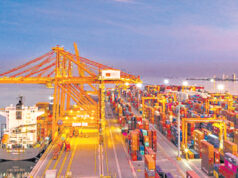When asked where they spend their leisure time, Filipinos rarely answer with anything other than the mall or their own homes. An adventurous few might say they go to nightclubs, or museums, or even venture outside the city to swim in beaches and scale mountains. But you would be hard-pressed to find a Manileño who doesn’t go to the mall a handful of times every month.
This hardly comes as a surprise for anyone who has ever set foot in Metro Manila, but quite a shock for everyone else. Research published by the international research and advocacy-focused Transnational Institute (TNI) showed that malls across the world are experiencing a slow and painful death, with studies predicting that malls in the United States and China will continue to dwindle in the coming years.
“Currently, only 1,000 malls remain in the US, and it is projected that by 2030, half of the country’s remaining malls will be replaced by community colleges, business offices, and healthcare facilities,” Jore-Annie Rico and Kim Robert C. de Leon wrote in their TNI paper titled, “Mall culture and consumerism in the Philippines.”
“Mall closures and bankruptcy are not just happening in the United States. The New South China Mall, said to be the world’s largest, opened in 2005 but has remained 99% vacant. Further, 138 department stores, 262 supermarkets and 6,209 sports stores closed between 2012 to 2015, according to the Beijing Technology and Business University.”
In Metro Manila, the malls are part of the city itself. Woven into the public transportation systems, offering free air-conditioning to the public, the massive commercial structures have integrated with Filipino culture by serving as a one-stop shop for all of life’s necessities, and many of its pleasures. Malls in Metro Manila, two of which are among the 10 largest in the world, offer anything from groceries, government services, cinema complexes, churches, medical clinics, food courts, restaurant hubs, shopping strips, gaming arcades, bowling alleys, and ice skating rinks for those with the cash to spare.
As the country has transformed to become one of the fast-growing economies in Asia, there is a lot of cash to go around. “The flourishing of malls is indicative of the country’s strong economic position, with the Philippines emerging as a ‘world leader and trendsetter in shopping malls’,” the paper said.
“The construction of malls cannot even keep up with the skyrocketing demand. In fact, it was projected that a record-high 724,620 square meters of new retail space was to be constructed in the Philippines in 2016, according to Colliers International.”
Ms. Rico and Mr. de Leon wrote that the Filipino fascination with large marketplaces had been intrinsic as early as the 19th century, when Spanish observers made note of the Filipino’s propensity for bartering. But much of what eventually became the mall culture of today came with the Americans.
“While the US mall boom started in the 1950s, the Philippines had its own as early as 1932. It was during the US colonial period when the first enclosed shopping establishment, the Crystal Arcade, was built in Manila. The Crystal Arcade became the capital’s most modern structure, even resembling the arcades of Paris, with covered walkways, window displays and cafés and other specialty shops,” the paper said.
“Aside from being an architectural feat, the Crystal Arcade ushered in an era of a ‘national culture centered on commodity.’ Although it was ravaged in the Second World War, the Crystal Arcade became the predecessor of modern malls in the country. Fifty years later, malls have become permanent fixtures in the Philippines.”
Malls have since effectively replaced parks as the de facto public space in the metropolis. This, however, is largely an issue of space rather than choice. Metro Manila is the most densely populated in the world — at around 12,000 per square kilometer, or twice the density of New York City. Property developers are making an effort to address the lack of green spaces by introducing eco-friendly programs and green architecture, but they reasonably have other considerations.
In writing for the Cities section of The Guardian, Colin Marshall pointed out how malls served as physical representations of the ideals of the country’s rising middle class.
Malls, Mr. Marshall wrote, “seem to target Manila’s emerging, young, more or less middle class, an enticing demographic represented by, for instance, the many employees of foreign companies who have in recent decades outsourced certain operations to the Philippines, easing the economy’s dependence on remittances from overseas foreign workers”.
“The de facto public space of the malls of Manila offer the best vantage point from which to observe the more ambitious, more demanding and more internationally connected Philippines that is now on the rise, coming up by whatever means it can,” he wrote.
Mr. Marshall noted that this ideal was even made more apparent in the prevalent advertisements coloring the cityscape, ads that prominently feature pale-skinned, fashion-conscious, English-speaking celebrities.
Ms. Rico and Mr. de Leon suggested that malls in the Philippines serve not only as entertainment, but as avenues of escapism for Filipinos. In essence, the rapid development of the country’s malls are a simulacrum of Philippine society, its culture, history, and pursuits, writ small.
“Malls provide a mirage of comfort, security and affluence. Indeed, their ubiquitousness in the Philippines is proof that they have become the core of the country’s urban life,” they wrote. — Bjorn Biel M. Beltran



